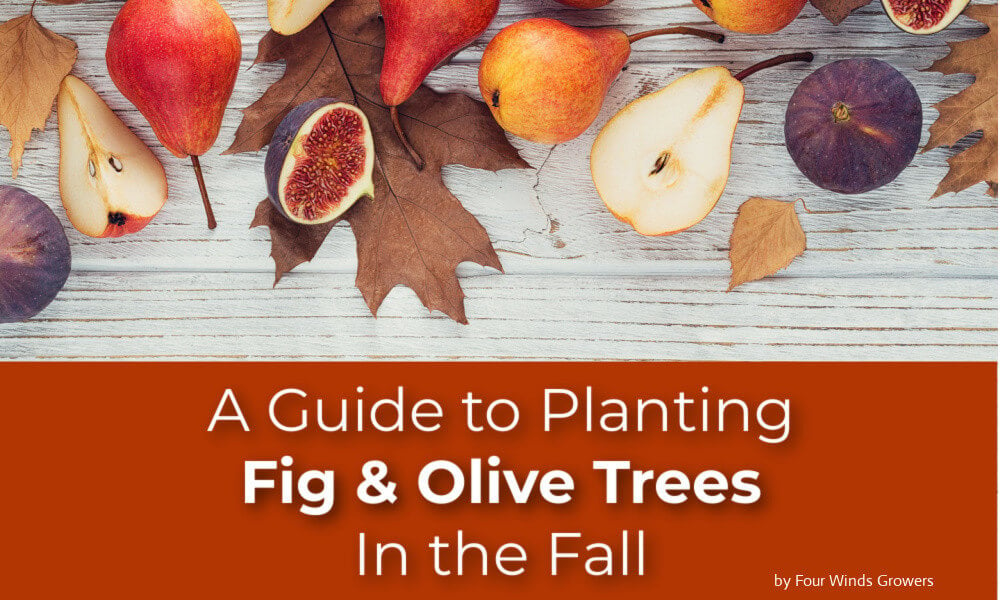The window for fall planting is usually September to October, and ends about six weeks before the hard frost hits. For those who live in climates with mild winters and low temperatures above 30 degrees, there are benefits to planting fig and olive trees in the fall as opposed to the spring.
The cooler temperatures and dry, warm soil of the fall makes for easier planting. The best time to plant fruit trees is when your soil is moist but not wet. After the summer, the soil is warmer and the roots still have a chance to grow and settle before the winter chill comes and the ground freezes. This way, the trees will be ready for new growth when spring comes. There are also less pests and disease issues during the fall.
Planting fig and olive and trees trees in the fall is beneficial because there will be time for the trees to get settled in the soil, which can result in a springtime growth spurt. Young trees are susceptible to frost damage, so our entry sized olive trees should be brought in during the winter or planted in the spring.
For oil production, Arbequina is popular choice. Its compact size is ideal for indoor or outdoor. They are self-fertile and do not require another olive tree to fruit. The Nocellara is the top pick for curing olives. It can also be indoor or outdoor and is self-fertile.
For mild, dry winter climates, fall is the optimal time to plant fig trees. The soil should be loose and well-draining, with a neutral pH balance of 6.0-7.0. Figs do not require heavy watering- in fact, less is more. When it comes to planting a fig tree, the early spring or late fall is ideal when the tree is dormant or in the process of going dormant. This is when all the leaves of the tree have fallen off and so there is less stress placed on the tree when it is transplanted. You can plant your fig tree when there are leaves still on it, providing that the roots do not dry out and the plant is watered well during the first few days.
To plant a fig tree, dig a hole twice as big as the root ball with an equal depth. This should be in a full sun, south facing location about two feet from a wall. Make sure that this is not in an area with standing water. When planting, disturb the root ball as little as possible. It is helpful to mulch around the root zone to help the roots from freezing. Even if a tree dies back during the winter, as long as its roots do not freeze, it will reestablish itself in the spring.
Fig trees can be planted in a container to be kept small and compact. When the winter frost hits, a potted fig tree can be brought in for the winter. However, in the ground, their roots have a chance to spread out. This can result in a bigger tree and fruit harvest. This is great for climates with mild winters. In areas that get below 40 degrees, keeping a fig tree potted is the preferred method so that it can be transferred into a garage or warmer location during the winter months. A potted fig tree should have very good drainage. In the winter, figs do require a period of dormancy where the temperature is between 15-35 degrees F with little light. When spring comes, move them outside as soon as possible for a longer growing season. For cold-hardy figs, we recommend Violette de Bordeaux and Brown Turkey.




